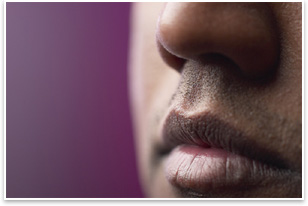
Scents and Sensibility by Russell Boniface
Summary: The properties of scent are influencing designs for high-end hotels, stores, offices, and homes worldwide, according to the Scent Marketing Institute, which claims an increasing number of architects and designers are contacting them about how scent delivery concepts work, what popular scents make a space inviting, and how scents can be mixed and matched. The Scent Marketing Institute's first Scentworld conference and expo will be held June 29–July 1 in New York City. The event will focus on the use of scent in buildings. Five hundred attendees are expected, including fragrance manufacturers, architects and designers, marketers, advertisers, retailers, and equipment manufacturers. The Scent Marketing Institute, based in Scarsdale, N.Y., facilitates scent branding. “We broker information between the buying and selling in the industry,” says Harald H. Vogt, the institute's founder, who has a background in the marketing and advertising of fine fragrances. “In the scent market, there’s a lot of information coming from the supply side. We are a place where our constituents get unbiased scent information, and we tell them the opportunities and concerns in the industry.” The upcoming conference aims to give professionals of various categories within the industry a chance to learn new scent concepts.
If an architect were to get involved in a scent delivery project, Vogt says the process would begin with the architect meeting with the client or tenant and a fragrance manufacturer to decide what scent to put into the building. “You build a fragrance brief that gathers all the information about the property, target group, the architect’s personal signature, and a local component. For example, if you are building a hotel or large residence in Las Vegas, look for a scent that represents entertainment and fun. Next, decide the audience you are trying to attract. If it’s a young, hip audience, get a report from the beauty industry to find out what fragrance is ‘in’ with your target group. A perfumer will ask you these questions. After you put the puzzle pieces in front of the decision makers, do a test with potential customers in a showroom or model home.”
Scent has proven properties according to tests, he points out, such as influencing the perception of the passing of time, and even increasing the perception of product value. “That’s what casinos and retailers capitalize on. Scent is not to influence, but to entertain, especially in retail. It’s about providing a multi-sensory experience.” Scent, particularly an apple scent, influences the perception of space, he adds. “It can help you perceive a small hotel room as not as claustrophobic as you thought.” An extreme example, he says, is when patients go for an MRI. “People are pushed into a tube and they get claustrophobic. Many can have panic attacks. If you deliver an apple scent, 70 percent of these attacks go away.” Vogt points out an orange scent can ease depression, a grapefruit scent can lessen fatigue, and a bergamot scent can reduce stress.
Every effort made to make scent delivery safe, provide choices
And what’s on the horizon? The future of scent, Vogt says, is expanding the concept to large spaces like concert venues and football stadiums. |
||
Copyright 2008 The American Institute of Architects. All rights reserved. Home Page |
||
home
news headlines
practice
business
design
recent related
› How We Use the Brain and Mind to Smell, Taste, and Touch
› Architecture and the Brain:
A New Knowledge Base from Neuroscience
Major companies that use fragrances are attending Scentworld conference and expo include SC Johnson—producer of such products as Shout, Windex, Pledge, and Raid—and Kimberly-Clark—producer of Kleenex, Scott, and Huggies products.
Go to the Scent Marketing Institute Web site.
For more information on the Scentworld conference and expo, go to the expo Web site.

 How do you . . .
How do you . . . Scent in the hospitality, residential, office, and retail sectors
Scent in the hospitality, residential, office, and retail sectors Once a client or tenant consents to a scent, a fragrance manufacturer creates the scent in quantity. Although almost every hotel does scent delivery in their lobby areas, Vogt says the next step is giving customers scent control in their rooms. Solutions are expected in about six months that would involve installing a scent delivery system that feeds via the HVAC system into all units. “Installing individual scent delivery systems in each unit allows people to turn on and off the scent quantity in their space,” says Vogt. “You can have multiple scents--maybe in the morning the customer wants one scent; in the afternoon, another. You can do a whole building with a technology investment of $25,000. It can be done easily and gives a building its character.”
Once a client or tenant consents to a scent, a fragrance manufacturer creates the scent in quantity. Although almost every hotel does scent delivery in their lobby areas, Vogt says the next step is giving customers scent control in their rooms. Solutions are expected in about six months that would involve installing a scent delivery system that feeds via the HVAC system into all units. “Installing individual scent delivery systems in each unit allows people to turn on and off the scent quantity in their space,” says Vogt. “You can have multiple scents--maybe in the morning the customer wants one scent; in the afternoon, another. You can do a whole building with a technology investment of $25,000. It can be done easily and gives a building its character.” Came up smelling like . . .
Came up smelling like . . .  An example of scent hypersensitivity is a scent that triggers a negative memory of a past event. ”The most powerful property of scent is that it can connect to past events,” Vogt mentions. “That‘s why there’s no artificial scent in public spaces. For projects like a time-share building, it’s important to give the customer control of the scent—control to manipulate the kind of scent, its intensity, and the opportunity to shut it off all together.”
An example of scent hypersensitivity is a scent that triggers a negative memory of a past event. ”The most powerful property of scent is that it can connect to past events,” Vogt mentions. “That‘s why there’s no artificial scent in public spaces. For projects like a time-share building, it’s important to give the customer control of the scent—control to manipulate the kind of scent, its intensity, and the opportunity to shut it off all together.”